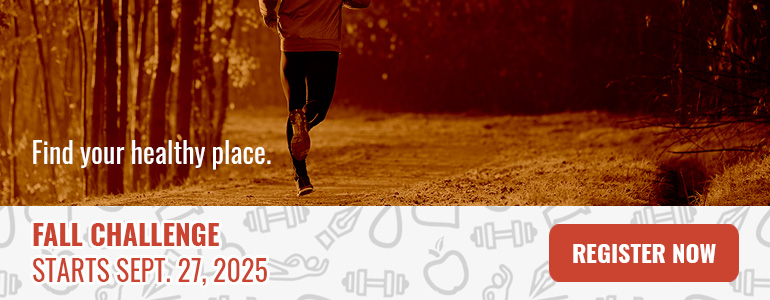 Reading Time: 8 minutes
Reading Time: 8 minutes- What is the “secret sauce” of long-term growth?
- How can the Whole Life Challenge help players stay on the path and not lose their way?
- What can we (the WLC) do to best to ensure that five years from now, players of the Challenge can look back on their progress and feel happy, satisfied, and confident that they’ve moved in the right direction — toward improved health, fitness, and well-being?
These are questions I’ve been continuously pondering since Michael and I created the Challenge in 2011. The WLC was an experiment — compiling all the things we’d learned over the years working with people on their health, fitness, and well-being, and putting them into a game. It worked incredibly well. And as we’ve experimented, learned, and grown, we’ve made changes and adjustments to elements of the game to continue to provide players with the best strategies and tools for long-term sustainable progress and growth.
Well, it’s time for our latest tweak.
Before I Go Any Further — the News
In 2018, we are shortening the length of the Challenge, shifting from our usual eight-week format, down to six weeks. We’re also shortening the span between Challenges, from nine weeks, down to six weeks, and will be offering four Challenges over the course of the year, one each quarter.
These changes are for one reason — setting you up to have the greatest chance to experience long-term, sustainable change. Let me explain.
We know what doesn’t work for long-term results — working harder, pushing more, or giving greater effort, time, or intensity. In fact, contrary to what we see in the high-speed, success-driven, fast-paced culture of the modern world, pushing harder for longer and expecting to get more done in less time are sure-fire paths to breakdown, burnout, and long-term failure.

Consider this. When your car is stuck in deep mud or snow, does it help to gun the engine and spin the tires to try to get out? While that is usually our first instinct, often it just makes our predicament worse.
Look around — we are a culture obsessed with efficiency, productivity, moving faster, tackling the next bigger challenge, and getting more done in less time. So, if we’re obsessed with those things, yet still unhappy with the personal health and well-being results we’re getting, perhaps it’s time to consider trying something new.
As the old saying goes, “If you continue to do things the way you always have, you’ll continue to get the results you’ve always gotten.”
The new strategy I’m referring to takes willingness, commitment, and discipline. It takes the consistent desire to show up in spite of how you might feel. It takes persistence and the courage to “show up” every day. It takes a willingness and dedication to follow the schedule, no matter what. And above all, it takes patience. While it was a long, gentle, almost imperceptible slope down into the less-than-optimal condition you might find yourself in today, the road back, if you want it to stick, is steeper, slipperier, and fraught with obstacles. Therefore, it will take time, effort, dedication, and persistence to negotiate it successfully.
What is this strategy I’m referring to? I call it the In-Season and Off-Season Strategy. But before I say more, let me ask you a question. Were you to spend at least half of the next 300 days being accountable, taking action, eating well, working out, sleeping, and managing stress, do you think you’d see progress in terms of your body, health, confidence, fitness, and overall well-being? Yes? Excellent. Me, too.
The In-Season and Off-Season Strategy
This strategy is composed of the rhythmic, back-and-forth combination of two alternating periods of time with opposite intentions — the In-Season and the Off-Season. The combination of these two periods over the course of the year creates an ebb and flow for your life, like inhalation and exhalation. One defines the other, yet they are distinctly different. The combination of the two allows you to push forward, then recover, push forward, then recover. The impact of this is slow, steady, consistent, long-term growth, day after day, year after year.
The In-Season is characterized by commitment, focus, accountability, discipline, and action. It’s the work period — when you turn up the heat and show up every day no matter how you feel. It’s during this time that you maintain your accountability to things slightly outside of your comfort zone, eat quality foods, cut out the dessert and junk, exercise daily, stretch, sleep, drink water, and reflect. It’s the time you lean on your teammates for support. These periods are hard, not because any individual part is necessarily arduous, but because combining all the elements and practicing them every day for the entire period is challenging.
The Off-Season is the opposite. It’s primary purpose is intentional rest. It should feel like you’ve taken off the pressure and you’re recovering from the rigor of the In-Season. The Off-Season is specific, planned, and scheduled. It doesn’t start randomly, by simply waiting until burnout occurs, and it doesn’t last forever, or until you “feel like” doing something about it. Instead, Off-Season is part of an ongoing set of cycles, ones you can count on, with specific start and end-points you’ve pre-committed to.
The Off-Season I’m talking about is like the off-season a professional athlete takes every year. You keep any habits you’ve developed that are easy to maintain, but you also let your hair down, kick up your feet, relax, and unwind. Just keep in mind that this break is for a specified duration, with an underlying commitment to getting started again once the Off-Season is over.

How I Know This Strategy Works
I’ve been using this strategy for over six years. By following the on-and-off schedule of the Whole Life Challenge seventeen times over that period, I got first-hand experience living it. I’ve seen how well turning up the heat, and taking it off, in a series of back-and-forth cycles works. I’ve made continuous gradual progress over that time, growing, learning, and gaining wisdom — simply by my willingness to jump in at the start of each Challenge In-Season.
By the way, I’m not alone. The players of the WLC who have experienced the greatest impact are the ones who’ve participated repeatedly and consistently over the years, gaining the advantages of multiple In-Season and Off-Season cycles.
Why does it work? Humans require recovery, down time, and time off — and we’re no good when we push too hard for too long. By cycling back and forth between periods of action, accountability, teamwork, commitment, and focus versus periods of rest, recovery, relaxation, and unwinding, we give our bodies and psyches the much needed mental, emotional, and physical breaks that are indispensable to a happy, healthy life.
Here are the basic ground rules to effectively adopt this strategy:
- Each In-Season must be short enough that you are at least 51% confident you’ll follow through and finish (nothing breeds long-term change like regular, consistent success).
- You must be willing to accept that the end of an In-Cycle isn’t the end the road — you probably will not have all the results you ultimately want at the end of a single In-Season period.
- You must be pre-committed to engaging in multiple In- and Off-Seasons. The cycle and long-term growth only works when you’re committed to both. Besides, it’s what a pro does — shows up and performs when it’s time to show up. For example, you might second guess yourself during the Off-Season, thinking you should just continue doing the things you were doing In-Season, with the same regularity, intensity and accountability. While it’s never bad to hang on some of those things, the purpose of the Off-Season is to intentionally shift gears. The same thing goes at the start of an In-Season. When the Season starts, you start. Professional athletes know that in spite of not feeling like it or thinking they don’t really need to start spring training, when it’s time to go, they go. Start again no matter how you feel about it. Period.
- Lastly, your In-Season must be composed of small daily actions that are slightly outside your comfort zone. When looked at individually, these actions will feel small, even easy, not big, hairy, or audacious. This is critical. Remember small actions, performed regularly and consistently over long stretches of time are what get you the biggest and best results. Small, daily practices. That’s it.
Adopting this strategy might feel strange, but for long-term sustainable change, I’ve found nothing better. It’s a short-term strategy applied over time that works — and the shift we are making in the yearly schedule of the Whole Life Challenge to six weeks on and six weeks off supports this strategy.

The Benefits of 6 On and 6 Off
How do you ensure continued forward progress? Give yourself intentional stretches of accountable, disciplined training followed by easy recovery, do it across broad health-related areas, and stick to the schedule in a regular rhythm.
Here are the benefits to a six-week Whole Life Challenge (and why we’re making the change):
- Finishing six weeks is better than not finishing eight weeks, especially when you’re committed to doing it again.
- Six weeks on is long enough to be challenging, yet short enough to be successful.
- Six weeks on is long enough to develop some stickiness around a new habit.
- Six weeks off is short enough that the next Whole Life Challenge is right around the corner.
- Six-weeks on/six-weeks off, repeated four times over the course of the year gives you 24 weeks of intentional practice and 28 weeks of recovery. It’s a pattern that can be as intense as you want during the In-Season and as loose as you want during the Off-Season.
I hope you’re as excited about this change as I am. As Michael reminded me, we created the original eight-week format of the Challenge on our very first attempt in 2011. Back then, our context was one Challenge — ever. That eight-week length was based on what we felt necessary for players to experience real change through participating one time only. Today, with multiple opportunities to participate, cycling on and off the Challenge up to four times each year, “one and done” is no longer the context.
We’re embracing this change with open arms, as it represents a significant improvement in the Whole Life Challenge’s ability to effect long-term, sustainable change in people’s health, fitness, and well-being. We’ll see you in the Challenge!







